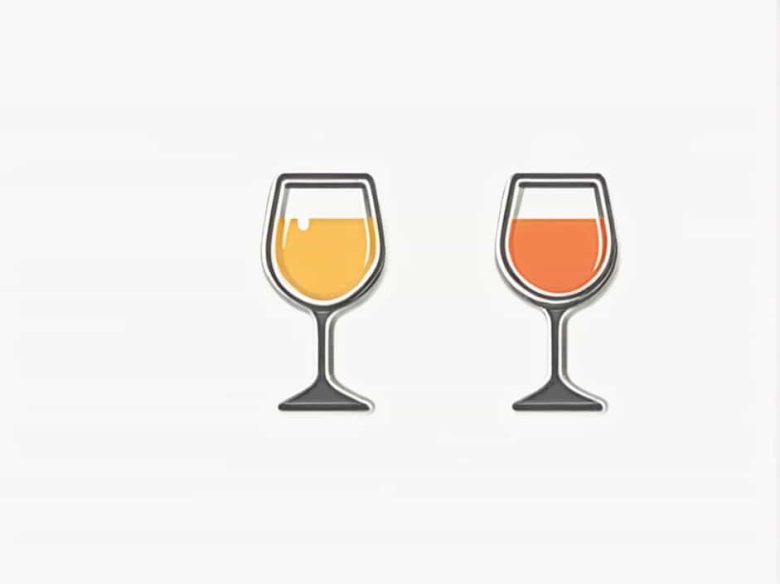Toasting is a common practice in social gatherings whether at weddings celebrations or formal dinners. While some people instinctively clink glasses during a toast others prefer to simply raise their drinks. But is clinking glasses necessary? Does it have a deeper meaning or is it just a casual habit?
This topic explores the history etiquette and cultural significance of clinking glasses when toasting helping you decide when and where it is appropriate.
The History of Clinking Glasses
Ancient Origins
Toasting dates back thousands of years with origins in ancient Greece and Rome. It was believed that clinking glasses helped ward off evil spirits. Some also suggest that clinking allowed drinks to spill into each other’s cups proving they weren’t poisoned—a concern in certain historical settings.
In medieval times clinking glasses and making eye contact became a way to express trust and goodwill. This practice carried forward into modern celebrations though its original purpose has largely faded.
Evolution of Toasting Traditions
Over time toasting became more of a symbol of unity and celebration rather than a safeguard against poisoning. The focus shifted to expressing gratitude honoring guests and marking special occasions. Today toasting is common in both formal and informal settings but clinking glasses is not always required.
Should You Clink Glasses?
Situations Where Clinking Glasses is Appropriate
- Casual Gatherings – At informal events like family dinners or friendly get-togethers clinking glasses is a fun and lighthearted tradition.
- Celebratory Events – At birthdays weddings and holiday parties many people expect to clink glasses as a way of enhancing the moment.
- Small Groups – If there are only a few people clinking glasses feels natural and personal.
When Clinking Glasses is Not Necessary
- Formal Dinners – In fine dining settings or corporate events raising your glass without clinking is considered more refined.
- Large Gatherings – When there are many guests clinking glasses with everyone is impractical. Simply raising your glass and making eye contact is enough.
- Certain Cultures and Traditions – In some cultures clinking glasses is discouraged or even seen as disrespectful.
Cultural Differences in Toasting Etiquette
Europe
- France – The French generally avoid clinking glasses preferring a simple raise of the glass with direct eye contact.
- Germany – Clinking glasses is common but it is considered rude not to make eye contact when doing so.
- Spain – Spaniards often clink glasses but believe that failing to maintain eye contact brings bad luck.
Asia
- China – Toasting is a deeply respected tradition especially in business settings. Clinking glasses is common but there are strict rules: the person of lower status should ensure their glass is slightly lower than that of a superior.
- Japan – The Japanese typically say “Kanpai!” while raising their glass. Clinking is done casually but is not always necessary.
- Korea – In Korea drinking etiquette is very structured. Clinking glasses is acceptable but one must always show respect to elders by turning slightly away when drinking.
United States & Western Countries
In the U.S. and many Western nations clinking glasses is seen as a friendly gesture. However in formal settings especially in fine dining or business events a simple raise of the glass is often preferred.
The Role of Eye Contact in Toasting
One universal rule in toasting is maintaining eye contact. Many cultures believe that failing to look into someone’s eyes while toasting is a sign of disrespect.
In some European traditions breaking eye contact while clinking glasses is said to bring seven years of bad luck. While this may be just a superstition eye contact adds sincerity and connection to the toast.
Alternatives to Clinking Glasses
For those who prefer not to clink glasses here are some alternatives:
- Raising Your Glass – Simply lifting your drink while making eye contact is always appropriate.
- Nodding – A respectful nod while lifting the glass can acknowledge the toast without needing physical contact.
- Tapping the Table – Some cultures tap their glasses on the table instead of clinking as a sign of respect.
- Verbal Cheers – Saying “cheers” “kanpai” or “salud” with a warm smile can replace the need for clinking.
Common Mistakes to Avoid When Toasting
- Forgetting to Participate – If someone gives a toast it is polite to at least raise your glass.
- Drinking Before the Toast is Finished – Always wait for the speaker to conclude before taking a sip.
- Overdoing the Clinking – Excessive clinking especially in formal settings can be disruptive.
- Ignoring Cultural Differences – If you’re in an unfamiliar setting observe others before initiating a toast.
Final Verdict: Should You Clink Glasses?
There is no universal rule that says you must clink glasses when toasting. It depends on the setting culture and personal preferences.
Clinking Glasses is Ideal When:
✅ You are in an informal or celebratory setting.
✅ Everyone is comfortable with the gesture.
✅ The group is small enough for meaningful interaction.
Skipping the Clink is Best When:
❌ You are at a formal or business event.
❌ The gathering is too large to clink with everyone.
❌ Cultural norms discourage it.
Toasting is a meaningful tradition that symbolizes unity appreciation and celebration. While clinking glasses adds an element of fun and connection it is not always necessary. Understanding the context and cultural expectations can help you navigate toasting etiquette with confidence.
Whether you choose to clink glasses or simply raise your drink the most important thing is to respect the moment and those around you. So next time you’re at a gathering observe the situation follow the etiquette and enjoy the toast!
